A few months ago a colleague asked me why I don't expect our preschoolers (age 3-5) to learn to raise their hand during group gatherings. I explained that I want our gatherings to be authentic joyful groups for sharing story, song, and conversation. I said that I've noticed that when teachers focus on strict "raise your hand" protocol the conversation is diminished. The focus of gathering tends to become about training children in hand raising. When children are trained in this way, the dynamic of give and take seems to be primarily a ping pong between a child and a teacher, and a teacher and a child, rather than an authentic circle of conversation between peers. I've noticed it also turns into copy cat responses from children. They sit there waving their hand, not paying attention, but primarily worried about their weary arm - and then when they are called upon they don't know what to say.
1 Comment
On the pathway towards independence, children fluctuate between feeling big and feeling little. One day they pretend to be powerful super heroes saving the world, and the next day they become helpless kittens curled up on their teacher’s lap. It is exciting to grow up, but it’s also perplexing and a little bit scary.
Children express their ambivalence by pulling us close, and then pushing us away. We’ve all witnessed the determination of a toddler who proclaims, “I do it by myself” and it is easy to assume that when this autonomy is expressed so boldly, that the child is on their way to self-sufficiency. But independence is a tricky concept, and in the next growth spurt, the child becomes clingy and fearful, and we wonder – is the child regressing? Why has it become a power struggle for them to dress themselves? Why do they still need my care? When I see this mercurial behavior in children, acting both self-reliant and needy, I think it eloquently symbolizes the universal push and pull all humans experience – the dance between our independence and our interdependence. Often when children most need our care, it is not because they are physically vulnerable, but because they are asking the bigger psychological and philosophical questions about human life - what does it mean to grow and change? Am I alone? Who am I in response to another? How much power do I really have? Who loves me? How are we connected? What is the relational nature of life? Our society and our educational systems place such a high value on independence, that sometimes we forget to value care. When children require our care, it is associated with neediness which is coupled with weakness, instead of the recognition that care is a beautiful and vital part of our humanness. The notion of rugged individualism is really a myth. Even if we think we’ve reached the pinnacle, the adult state of independence, we must still acknowledge that our survival and success is always reliant upon someone else; the farmer who grows our food, the grocery store where we shop, the transportation system, and the care infrastructure that allows us to work and live, to name a few. We are all needy! There has always been a network of care that supports us, and for many years, most everyone free rode off women who cared for children and elders and made it possible for men to work and achieve. The paradox of identity development is that we can’t do it alone. It is only through the response of the other that we find ourselves. Care should not be held in contrast to independence and strength. It is time to push against the notion that care is a soft skill. As Nel Noddings says, “Care is the strong back bone of society”. To be human is to follow our natural urge towards individualization and sovereignty while recognizing the seed of our personal power grows from community, cooperation, and care. Imagine how our educational systems could change if we integrated care ethics into our pedagogy and practice. What if we explicitly analyzed the same questions young children ask at the beginning of life in their push and pull towards independence – the big questions about the relational nature of being human. What if caring was taken seriously as an educational goal and objective; caring for one another, for our children, our elders, our community, our planet? Care looks differently at each stage of life, but care is what builds the foundation for self-worth, perspective taking, and empathy. These are the vital building blocks of a strong society. Care offers all the conditions for progressive education and self-actualization. Care is not subordinate to education, care is education. Carol Garboden Murray, Author of Illuminating Care, The Pedagogy and Practice of Care in Early Childhood Communities, Exchange Press, 2021. Throughout my career, I heard this message, "Don’t talk about care.” At conferences and leadership institutes, I was told, “You will never be understood or respected if you use care to describe your work. Don’t call your school a child care center, call it an early learning center. You are more than just child care, and you should use the language of education.”
But care was the thing that fascinated me the most in my study of human development. I recognized the false dichotomy that education and care were separate. I wasn’t willing to rank care, hide care, or disguise care. I wanted to name care and to show that even the most basic rituals of caring between adult and child require dignity, respect, presence, dialogue, and intelligence. Early childhood is the original care, and so as a first teacher, I have had the opportunity to practice and analyze care. I have written a book about care, not just because I want to take good care of children, but also because I believe that care offers a way of encountering the other—an ethical model for relationships that we can apply to the whole span of life. We are connected through care and dependency throughout the arc of our life. Care looks different at each stage of life, but care always builds the foundation for self-worth, for perspective-taking, for empathy. These are not soft skills—these are the vital building blocks of a strong humanity. Care offers all the conditions for progressive education and self-actualization. Care is the next frontier for achieving work-family balance and gender equality. Care is a basic human need, a public good, and a human right. I believe we need to analyze care, and practice care more than ever before because in our country we are in the midst of a care crisis. Care is endangered by programs that place inappropriate goals and misguided expectations on children and their teachers. Even in early childhood settings where care is assumed, care is most often an afterthought, and responsive care is neglected as an intentional teaching practice. Care is suffering because we have not shown its value as a public good in our country. Working families cannot afford high quality care for their children. The average annual cost of child care for one child in most states is more than the cost of a mortgage and is approaching parity with the cost of college tuition. Care is burdened because the underfunded care system has resulted in extremely low pay for early childhood teachers, many of whom are earning poverty wages. It will take courage to face the care crisis. It will take courage to challenge the notion that care is subordinate to education or that care is women’s work and a private family matter. It will take courage to lift care from an association with weakness and fragility and align care with strength and power. It will take courage to show that caring is not custodial work that just anybody can do, but caring is an art and a science, and an honorable profession requiring much knowledge and many skills. It will take courage to free care from gender roles, and make care attractive to men and women, to all people, and to position care as a human right and a public good. It will take courage to illuminate care. During the global health crisis our whole world has paused, as our interconnectedness as humans has been highlighted like never before. The way we emerge from this moment in history will be dependent upon the way we care for one another. I believe that together we can rescue care and I believe that care can rescue us. Preview Illuminating Care here, https://exchangepress.com/catalog/product/illuminating-care/3600582/ During COVID child care we made changes to our traditional care rituals - especially those around meals. To minimize teacher prep time, reduce high touch surfaces, and increase sanitation around meals we stopped doing our family style snacks and asked families to send in brown paper bag snacks and water bottles each morning. I really miss our family style shared morning snacks and I am looking forward to getting back to it. I just found these sweet vintage jelly jar glasses and can't wait to see them in the hands of children.
It is good to teach children to drink from a an open cup quite early. Teachers report that more and more children are delayed in drinking from a cup because of our water bottle and sippy-cup culture. Drinking from a cup supports oral motor skills and ushers in the ease and mastery of other important tools - such as getting the spoon or fork to the lips. Children are still learning how to control hand gradation from firm to gentle grasps and they will crumble plastic or paper cups with their small fists. Small metal or plastic cups are better for giving the child the firm feedback to support learning this new skills - and there's nothing quite as pleasing as drinking from glass. Drinking from an open glass or cup is different than drinking from a sippy or a water bottle. Young children who drink from sippy-cups habitualize throwing their heads back to allow liquid to flow, while drinking from a cup actually requires the skill of holding the head relatively level while the hand and head work together to coordinate just the right flow of liquid into the mouth. To think of care as an art, invites us to place attention on the materials of care, and meals offer such rich possibilities. When we value care, we find luxury in the simplicity of every day items. The art of care need not be flowery or decorative - the sophistication of real objects shows an honest respect for care that can elevate routines to educational experiences. We can see the beauty in the authenticity of daily living and witness the miracle of the mundane as the child learns to tip a cup and take a drink. I first heard the phrase Via Negativa from the poet David Whyte As he would describe it, Via Negativa is what we must say NO to in life to find the next step that serves our deeper unfolding.
Early childhood teachers are suffering from a collective identity crisis. For years, we've been standing in defense, trying to justify our profession by borrowing language and imagery that is not our own. We've been trying to align with K-12 teachers, and while doing so, we have reached outside of our field to use someone else's language, imagery, and practice in attempt to show that we are "real" teachers.
Two years ago I drove to a neighboring state with a teacher friend to attend a professional development night hosted in a Reggio Emilia inspired school. As the director gave us a tour of the classroom walls lined with photos and quotes of children engaged in emergent projects, she explained how the preschool teachers had worked on the documentation on their own time. She admitted to us that she expected this kind of reflective work at her school, but she hadn't figured out how to schedule coverage or pay for preparation and documentation time for her teaching team. When she made this admission, my mind froze. I couldn't pay attention to anything else for the rest of the evening. I was stuck in a downward spiral of thought that went something like this, "No way! This is abusive. Reggio Emilia educators would never endorse this kind of treatment of early childhood teachers. A central purpose of reflection and documentation is to professionalize our work, and to show the intelligence of the children and teachers collaborators. How do well intentioned people get so off track?" My heart was heavy and filled with righteous indignation. I thought of my many colleagues who have told me similar stories of teaching and caring in beautiful private progressive schools where they work with no health care and make half, at best, the salary of public school teachers. I thought of a young teacher I met at a child care council training a few days earlier who told me she worked a 9 hour shift daily because her director gave her a hour unpaid lunch break so she could stretch her shift to cover both the opening and closing hours, in the name of providing children consistency. I thought of the job posting I had recently seen at a well known, well endowed, college seeking someone with a degree in early childhood development to work for $13 an hour in an infant toddler center.
I felt intense grief and disbelief when I first put on a mask to go grocery shopping this summer after stay at home orders were lifted. It was so strange to muzzle my mouth and my smile. Surprisingly, as I stepped back into my routine of Saturday morning grocery shopping it didn't take long to noticed how happy I was to see my favorite checker, David. In all my years of shopping at Hannaford's, we had never talked beyond shallow pleasantries, but now we found ourselves chatting like old friends - the masks didn't break our connection, rather it forced us to connect with our conversation and by what felt like our hearts. While my groceries rolled by me on the conveyor belt, I learned that David has 5 siblings, he is a favorite uncle for a big crew of nieces and nephews, he is saving all his money to buy a new lap top, and he is planning to go back to college next year to study design. As I pushed my cart through the parking lot, back to my car and pulled my mask down for a breath of fresh air, I instantly knew I would be okay. I felt connected. I knew we would find a way to teach and care even with masks on.
We spent a good deal of time worrying about the effects of mask wearing on young children this summer as we prepared to reopen. In NY State at the preschool program I lead, all the adults are required to wear masks at all times. Sometimes we've experimented with clear masks and face shields and at times these alternatives are especially helpful (such as during story time when we really want the children to see our expressions) but mostly, given that we are working at least 8 hours a day, we have just adapted in a matter-of-fact-way to putting on a mask to go to work. We seek the most comfortable mask we can find, give each other masks breaks, and change our masks a couple of times during the day to freshen up. What's amazing is how well the children have adapted. Not only have they adapted, but they are teaching us about their own innate social-emotional intelligence. My friend Shelley who is also teaching preschool with a mask on says that sometimes she plays a game where she pulls down her masks to reveal her funny exaggerated emotion and kids laugh and say "Yep- I knew your face would look happy (or surprised or sad). She explained that kids seem to tune into her and check in to see emotional state even more than she had previously realized. Children are always watching our eyes - our gaze holds incredible power to convey care and love and respect. Children also tune into our tone of voice, our gestures, our body language, our stance. These are all the subtle ways we communicate with children and with one another. Wearing a mask forces us to strengthen our expressive art of caring. As I've been wearing a mask this fall, I've been thinking about care as the first literacy of life. It is through our touch and our gaze during care rituals - feeding, rocking, holding, dressings - through the first human caring exchange, that our children listen to our unspoken messages and connect through the language of our care. I believe this language is not only conveyed through what is seen (through the gaze) and what is felt (through the hands and body) but also through what is sensed (through the heart). Howard Gardener teaches us about children's inter and intra-personal intelligences. He describes how children have heightened abilities to sense and intuit their way through social interactions and how they hold awareness of self and other. Howard Gardener even went on to describe another kind of intelligence - one he calls existential intelligence which involves the child's ability to go beyond what is seen and heard. Yes, we know what he is talking about because when we care for young children we go beyond what is seen and heard - we experience this existential intelligence regularly. As I marvel at the children, I ask not how we as humans learn empathy, awareness, and connection but how is it that we lose these things? As an early childhood teacher and leader, I have been told in the past, not to talk about care to describe my work. At conferences and leadership institutes I have been advised to use the language of academia to demonstrate how children learn. The message has been, “Others will think you are just babysitting if you talk about care. You need to show that you are above that. Don’t call your school a child care center, rather call it an early learning institute. You are more than care.” Embedded in this message is the notion that the older the person you teach, the more respect you earn. College professors and high school teachers are really “teaching”, while those that care for babies, toddlers and young children are at the bottom of the educational hierarchy. We’ve been told to reach up into schools for categories like math, science and literacy to give child care legitimacy. Even within our own field, we’ve been forced to use these terms to achieve accreditation and recognition. Another implicit message we internalize when we disguise the care of children with academic categories is captured in this quote from David Hawkins, “Much of our zeal for reform in early education is consistent with the interpretation that we don’t really like children and we want them to grow up as soon as possible” (D Hawkins, The Informed Vision). The language and systems we have been asked to use are not born from within, they are borrowed, and they don’t respect or see truly the unique stage of life called early childhood. They push down, they pressure, they hurry, they confine. They causes us to subjugate child life, and to place children and their care subordinate to what is thought of as academics learning. In my career, I have learned to talk the talk and I know how to pin academic standards on just about every aspect of child care and early human development. When I see the three year old sitting at the table eating snack, I can tell you how she is using her proprioceptive intelligence to find her seat, to hold herself in a healthy posture while she also uses both hands to pour her own water, strengthening her attention and her brain development as she crosses midline. I can tell you about the sequencing and the fine motor skills she practices while she uses a small knife to spread humus on her cracker. I can describe the language and vocabulary lessons embedded as she shares conversation with her teachers and peers. Most importantly, I can describe her budding sense of self and the knowledge she gains about her own agency and worth as she builds an intimate relationship with food, growing a self-awareness about her likes and dislikes, and her internal registers for hunger and satiation. I can describe how the lessons learned at snack time are linked to future academic success, but as I do so, I wonder, why can’t we appreciate care of children for its own sake? Why does this language feel artificial and contrived and sorely missing the mark? Why must we commodify children for some future goal? Why do we speak a language that is not our own, while simultaneously complaining that the work of early education and care is misunderstood, unappreciated, and nearly invisible? By not speaking opening and explicitly about care, I believe we are propagating the false dichotomy that education and care are separate. I am no longer willing to rank care, hide care or disguise care. I want to name care and show that the most basic rituals of care, which society typically thinks of as custodial, are intellectual encounters. Whether serving a meal, changing a diaper, wiping a nose, holding a hand, or helping a child put on his mittens, care requires a special kind of intelligence, insight, dignity, respect, presence and dialogue. A child is learning about himself and others through care. Care offers the first lessons in empathy, perspective-taking, partnership, and human worth. These are not soft skills. This is the knowledge that cannot be categorized, measured and standardized. Care is the making of humans. Care is the lesson of love, connection, and human dependency deeply embedded in the body and mind of a young child in the present moment. Care is the origin story we all share. As early childhood educators, we have had a hard time naming what we do because care is so close to us. In a field that is the domain of women, care is undervalued, expected, and assumed. Sometimes it is so familiar to us that it seems simple and obvious, but it is not. Care is complicated, profound, and strong. As first teachers we have an incredible opportunity to examine care, describe care, and lift up care as the seed of human growth and development and self-actualization. Care offers a way of understanding life. Care is an ethical model for relationships, happiness and lifelong learning. As early childhood teachers, I invite you to be ambassadors of care.
Together, let’s liberate care! |
Carol Garboden Murray, M.Ed.Archives
July 2022
Categories |
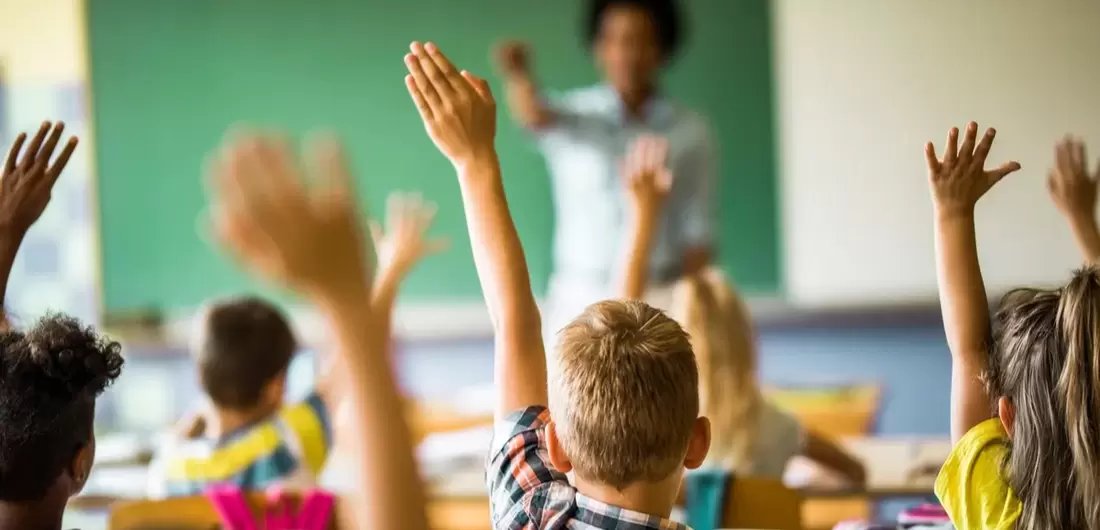
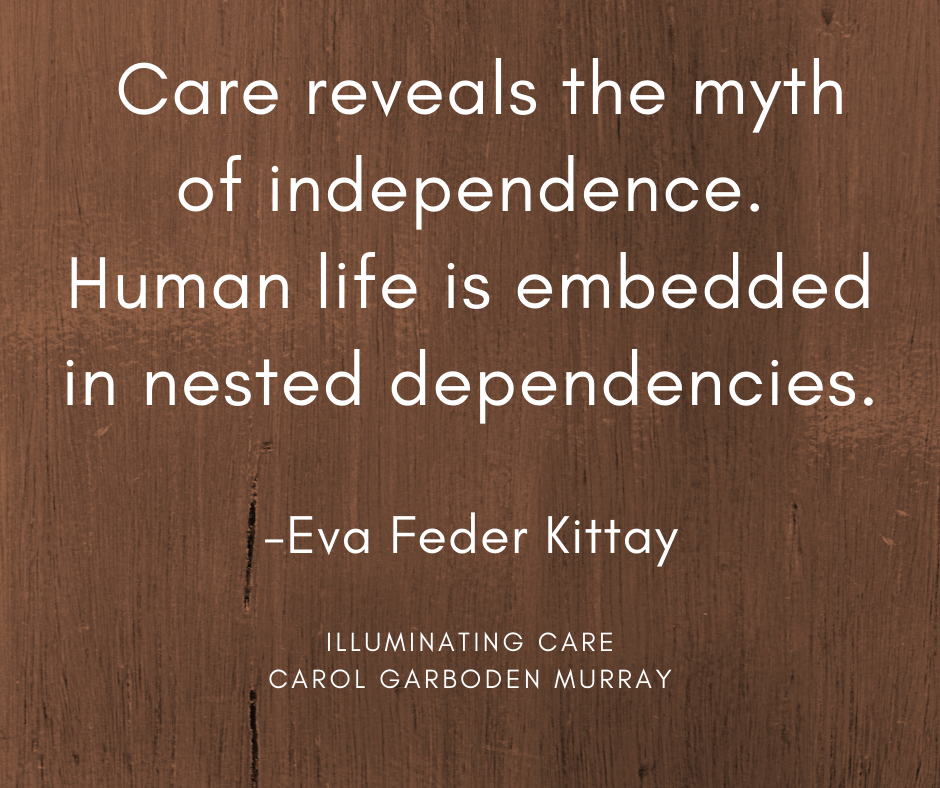
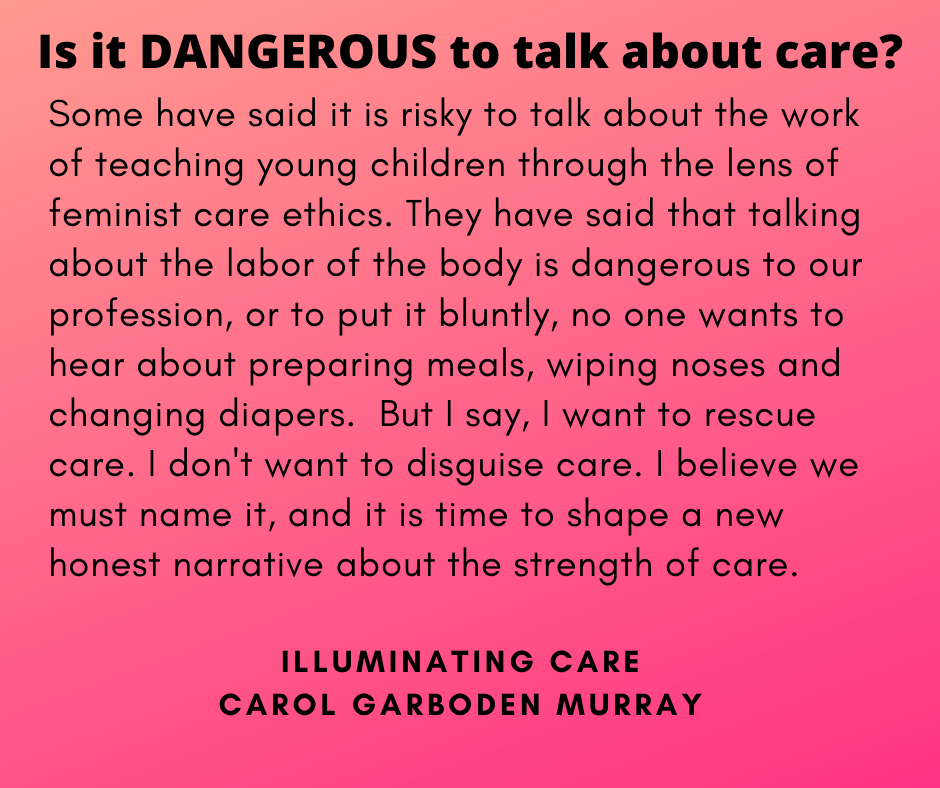
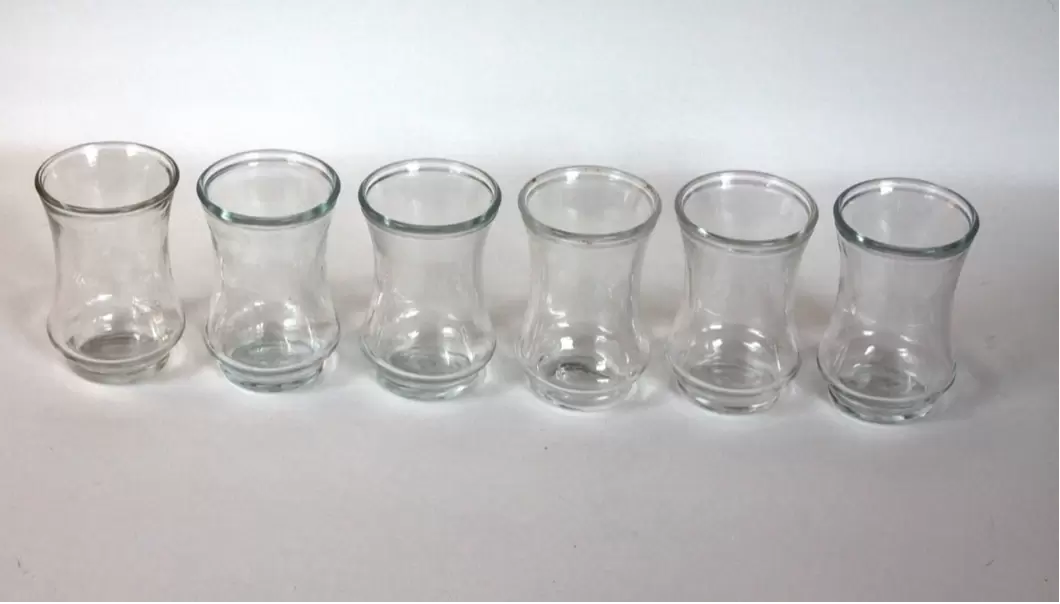
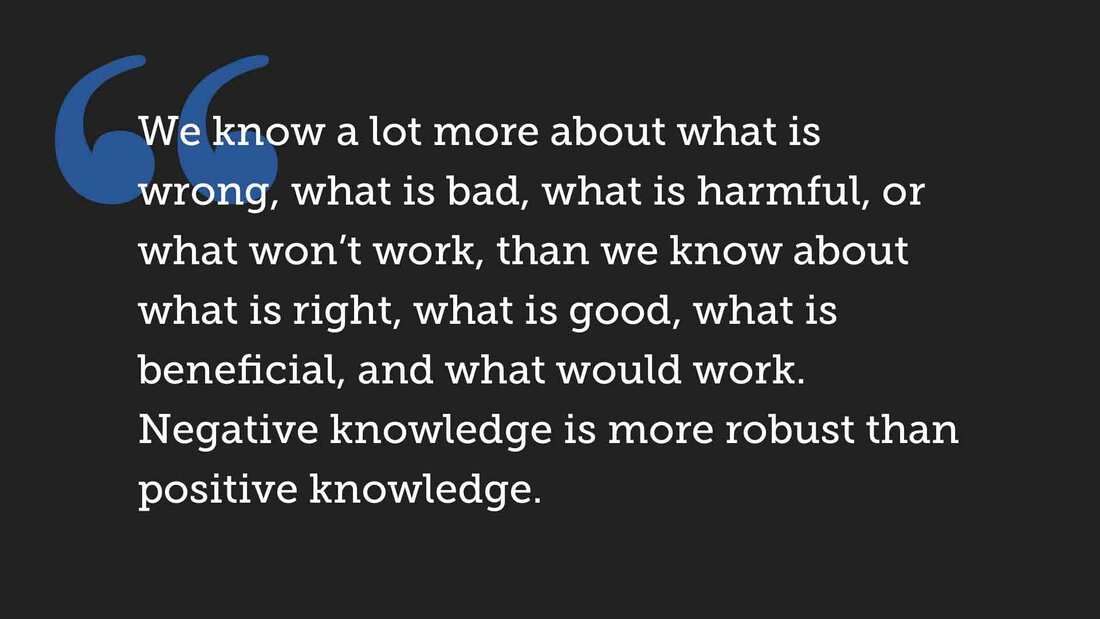
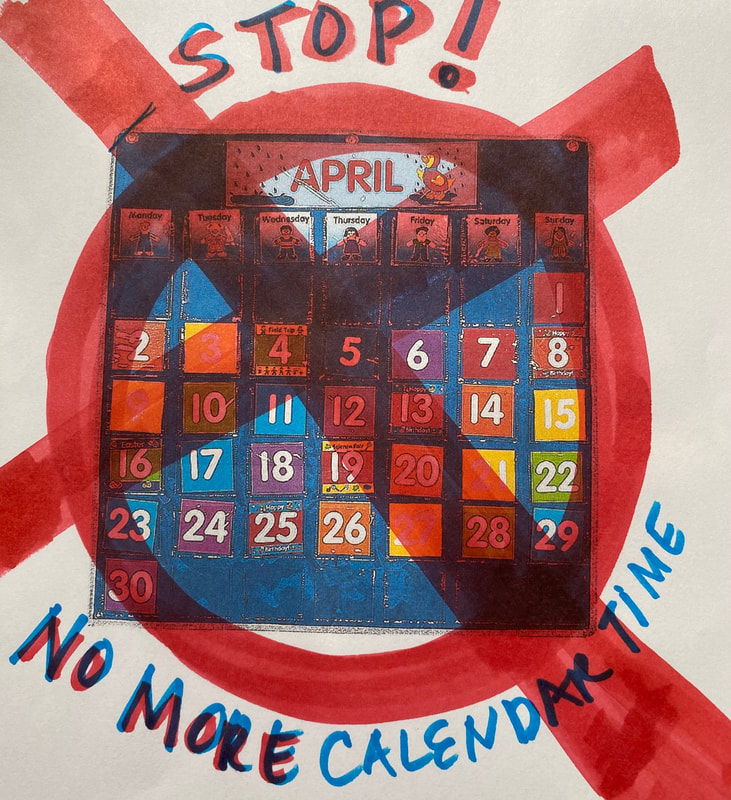
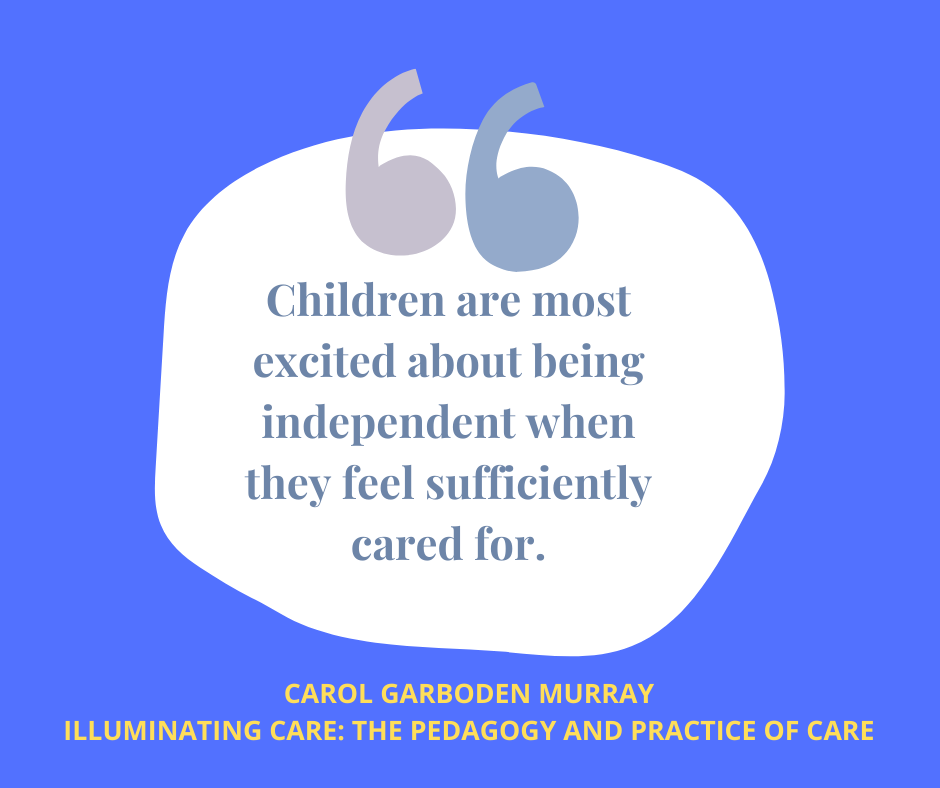
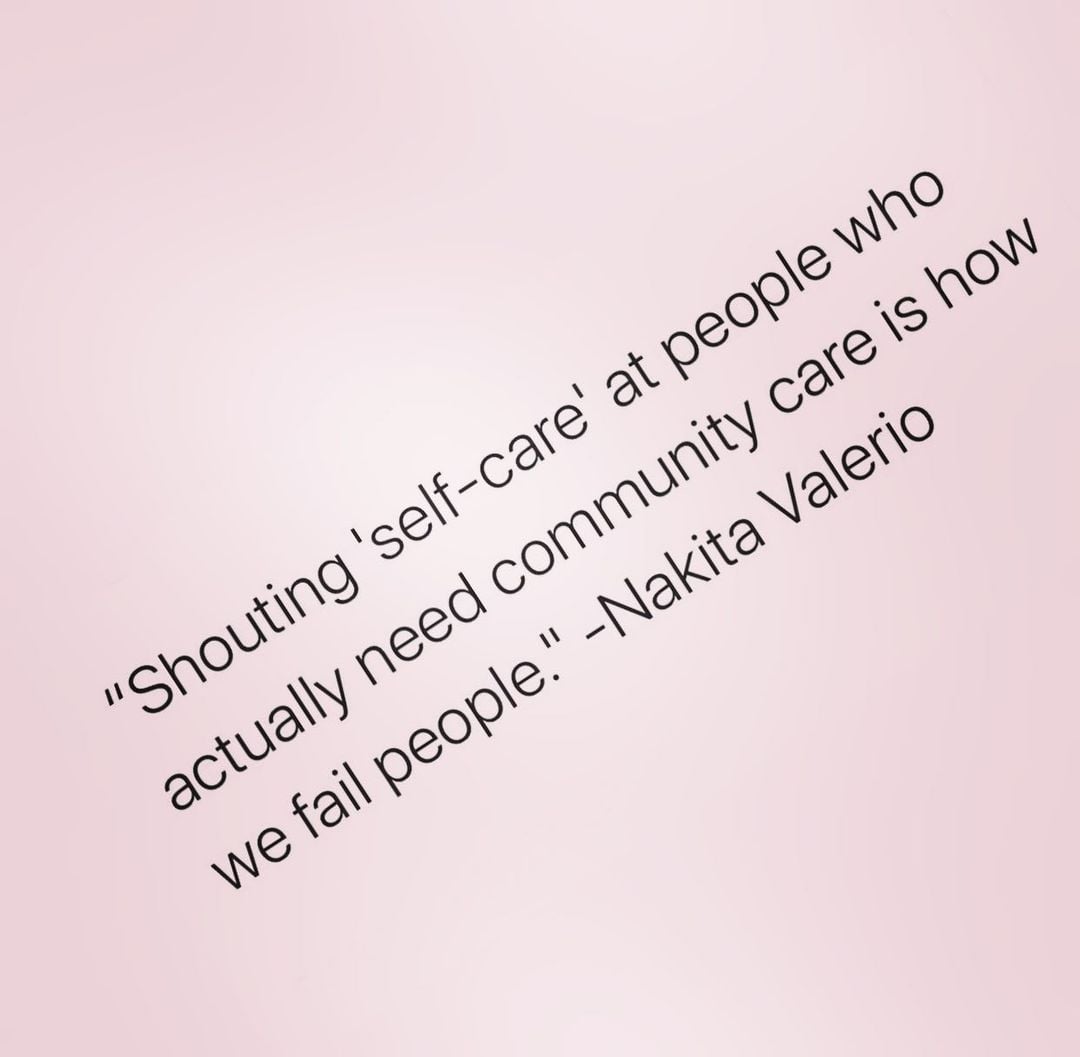
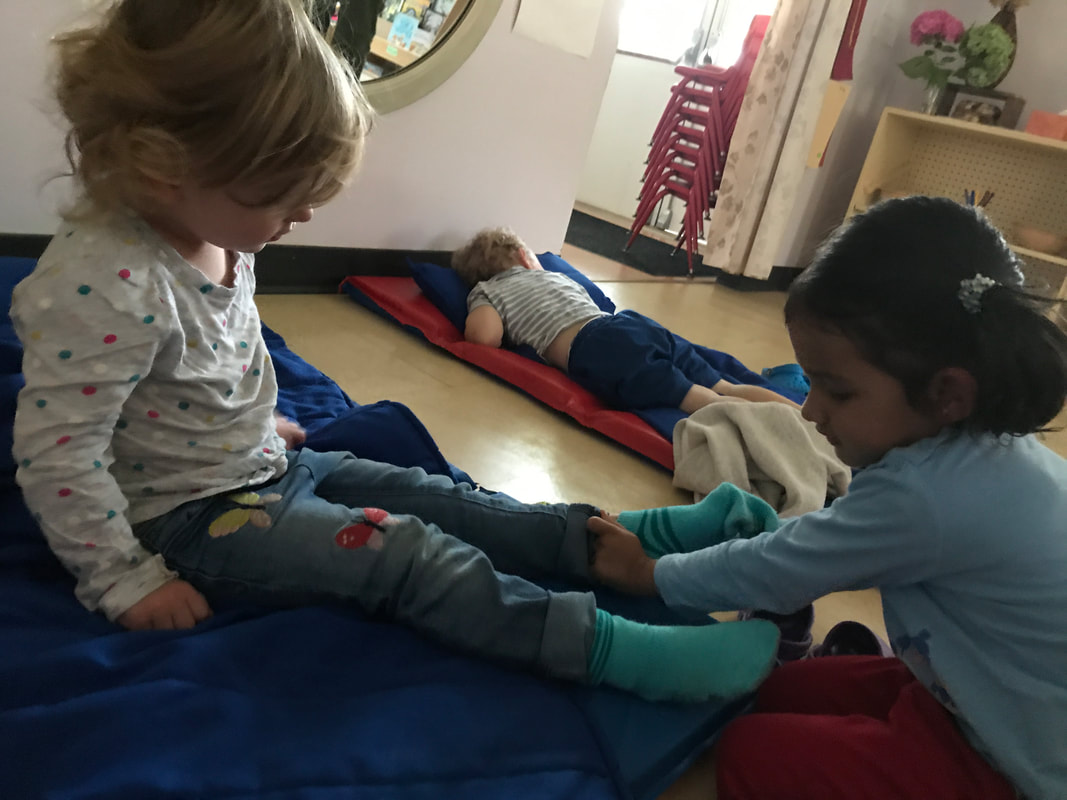
 RSS Feed
RSS Feed